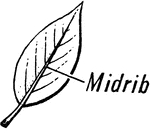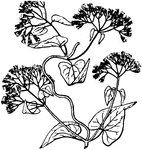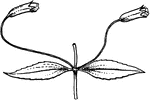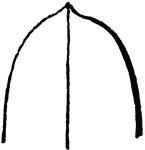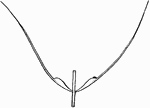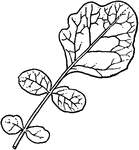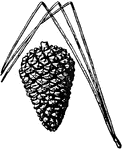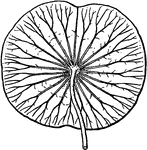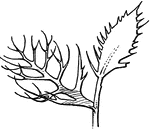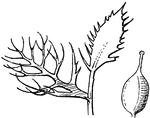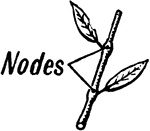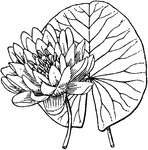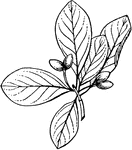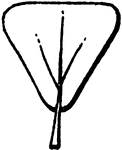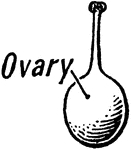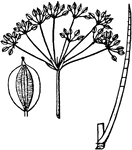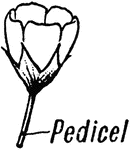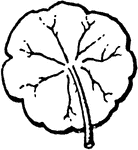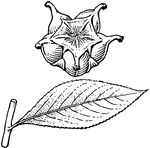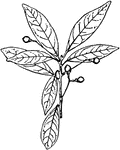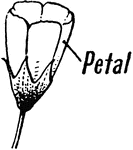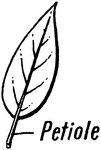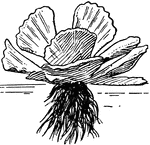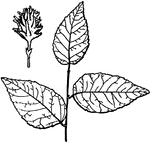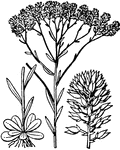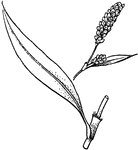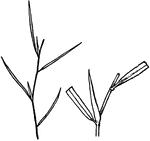
Myrica
Leaves with small, orange wax glands on te lower surface when examined with lens; leaves usually prominently…

Needles
A shrub with leaves that are short needles, arranged in two ranks along twig, or sometimes appressed…

Nemastylis
Flowers violet, over 3cm scross; leaves equitant at base; that is coming in two ranks, making the base…
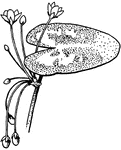
Nymphoides
Leaves small, mostly less than 15cm. long, heart-shaped; flowers white and less than 2.5cm across.
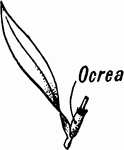
Ocrea
A tubular sheath present on the stem just above the base of the leaves of docks and smartweeds. It is…

Orontium
Plants smaller; not wite-powdery above; leaves shed water easily; flowers along fleshy spike enclosed…
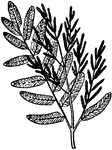
Osmunda
Spores borne on terminal modified leaves; divisions of the leaf larger, more than 2 cm long.

Peltandra
Leaves usually with sharp lobes; flowers individually inconspicuous, on a fleshy axis snclosed in a…
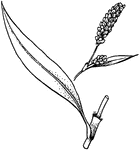
Polygonum
Stems with a sheath just above attachment point of leaf; flowers individually small, white to pink.

Polygonum
Sheaths around stem above each point of leaf-attachment; flowers white to red, not fragrant.
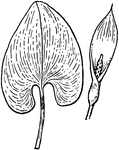
Pontederia
Leaves with blunt lobes; flower conspicuous, purple, not on a fleshy axis enclosed in a leaf-like sheath.
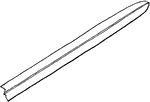
Potamogeton
Leaves with midribs evident when examined against light; flowers inconspicuous, not yellow.

